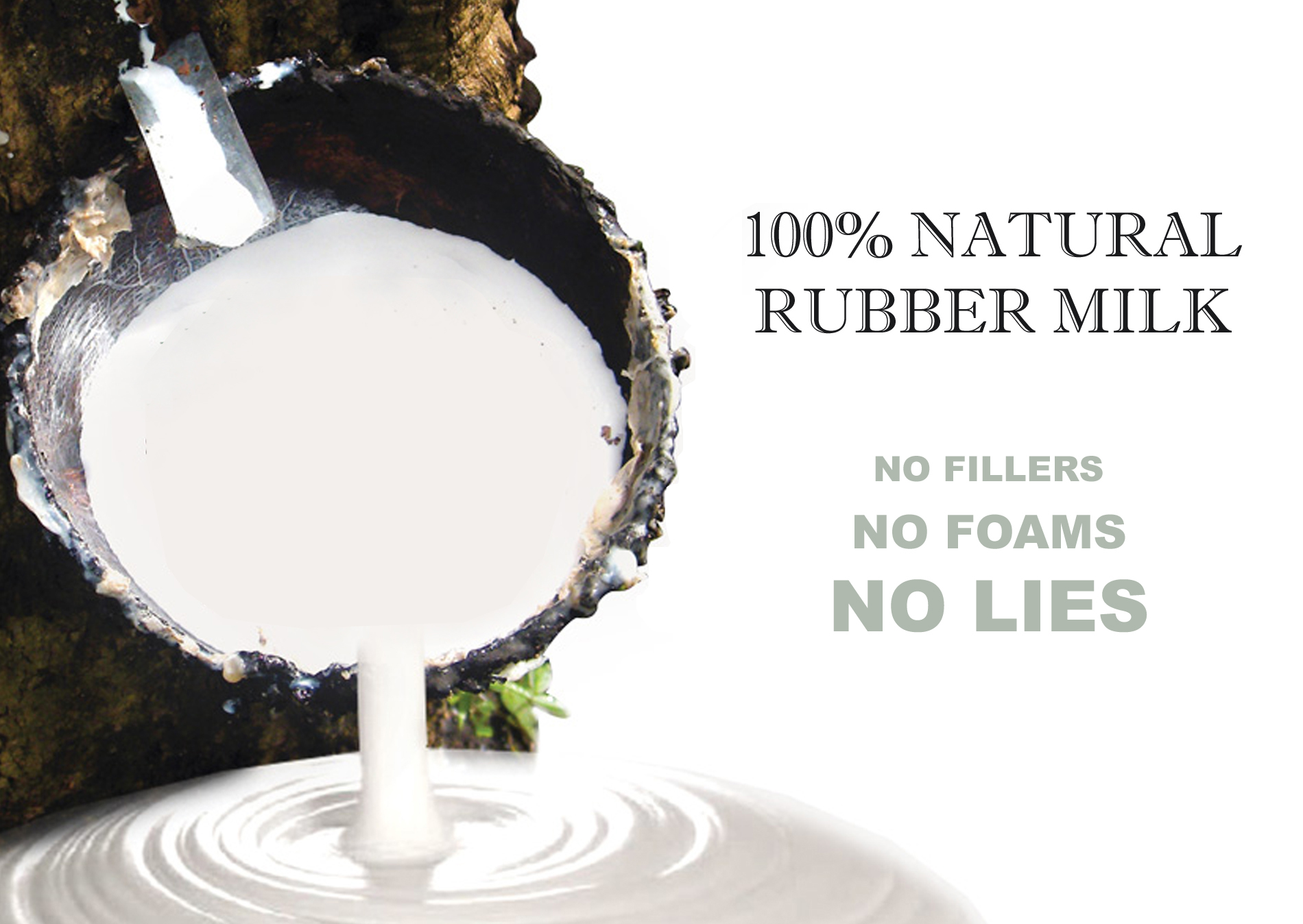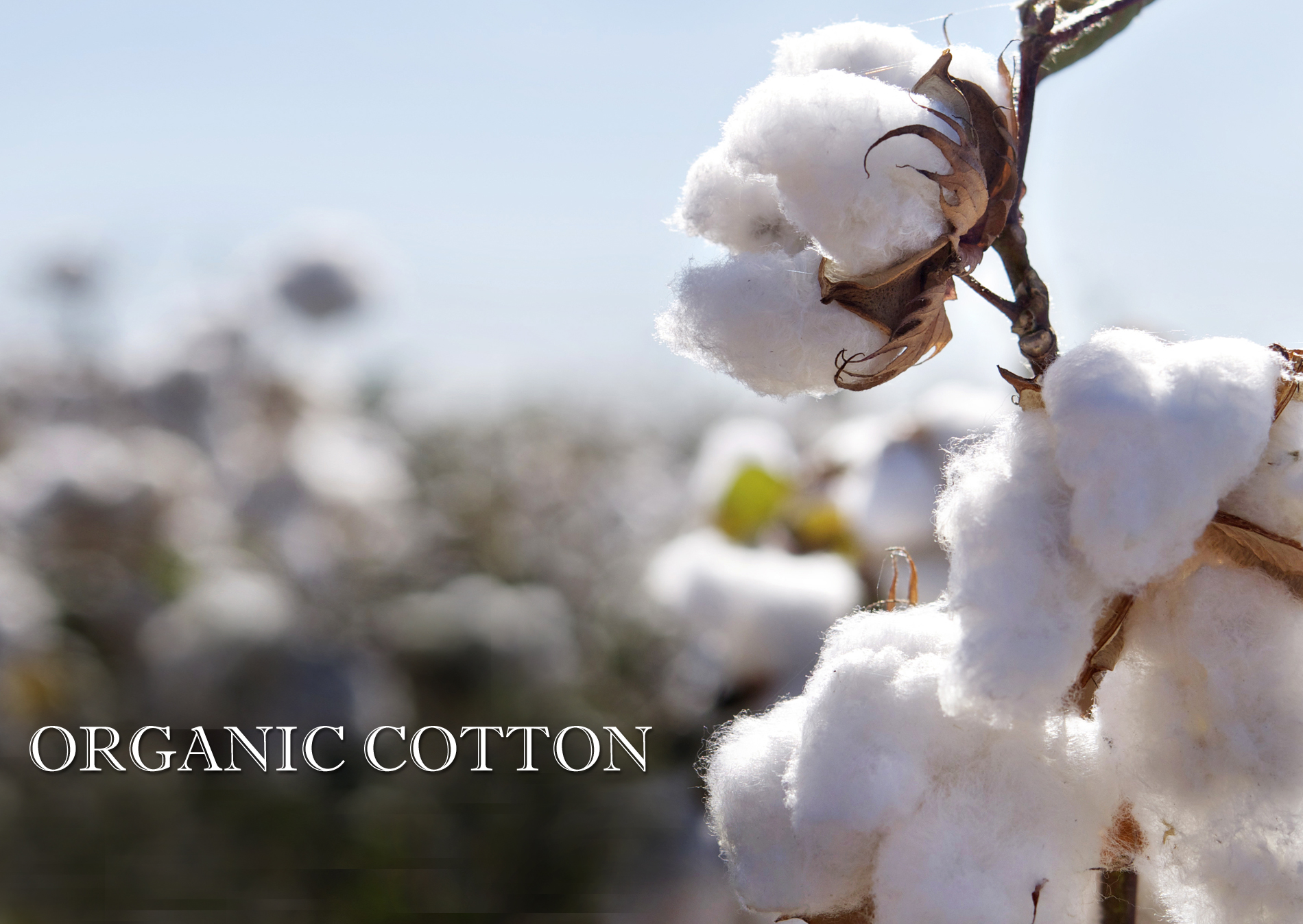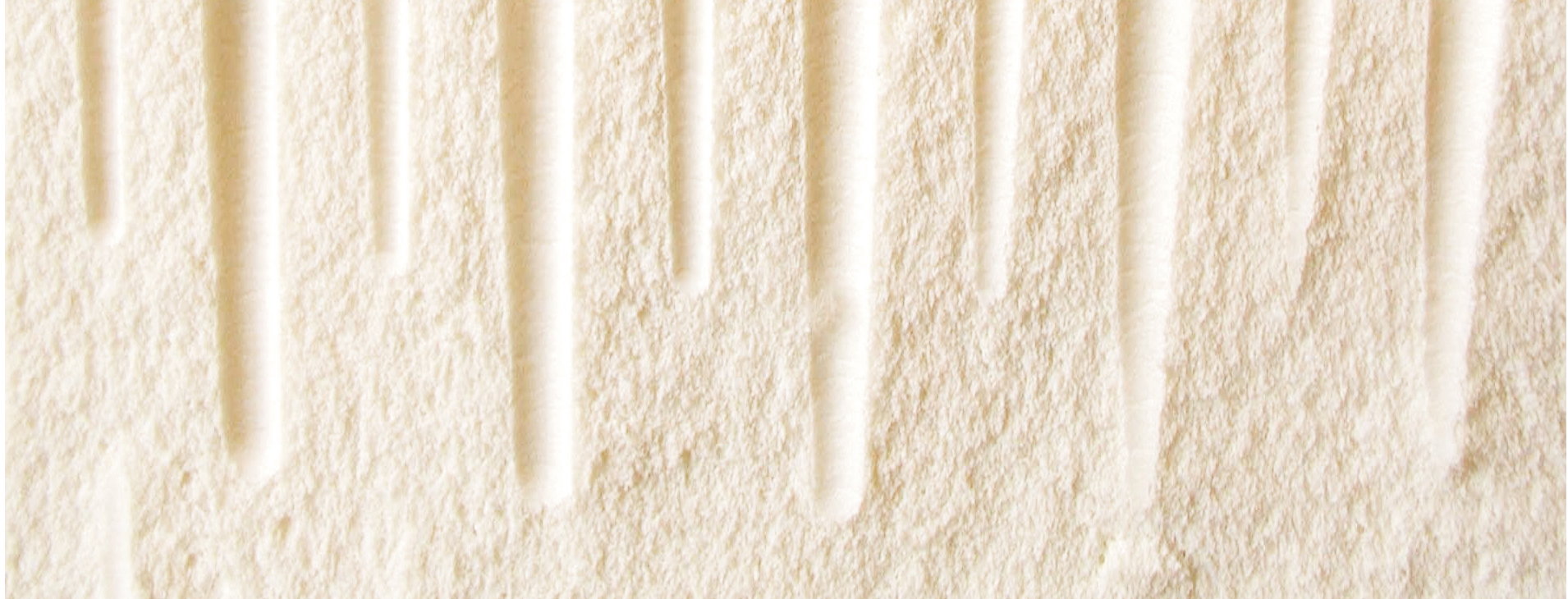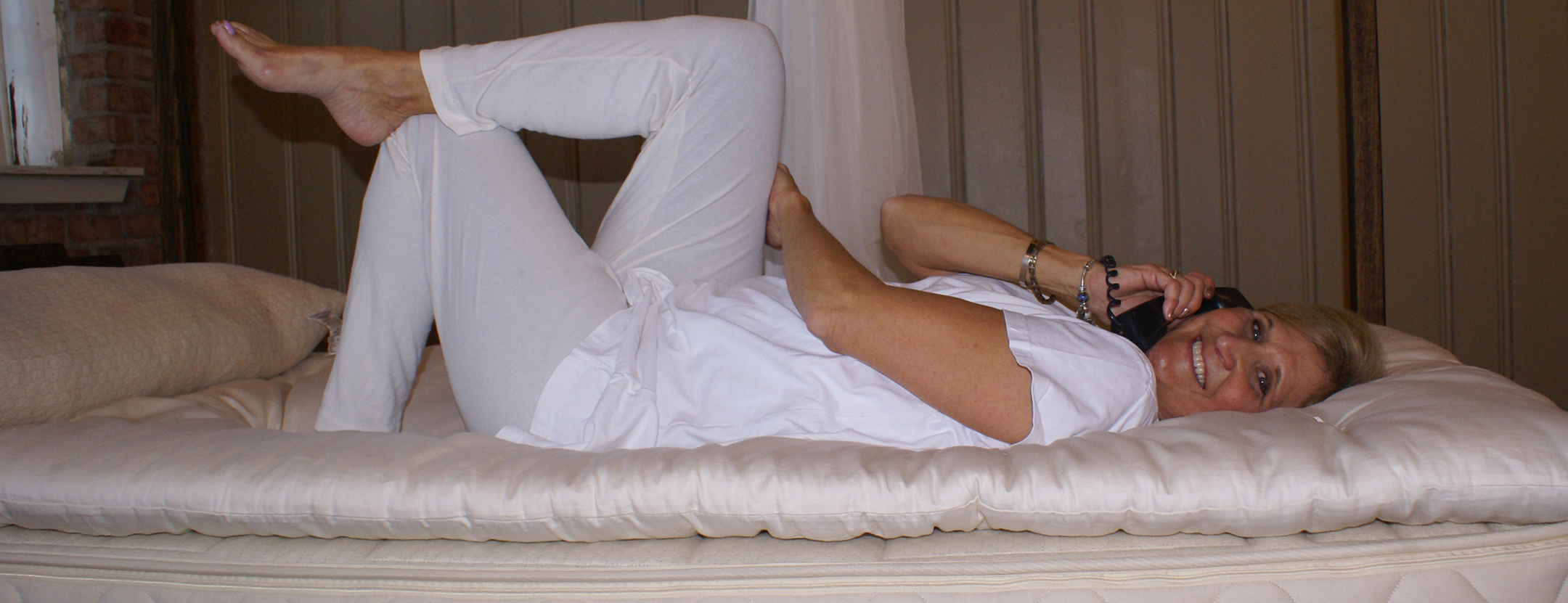NATURE’S FINEST MATERIALS
NATURE’S FINEST MATERIALS
Natural Latex
The natural rubber is harder than synthetic latex and the strongest, most durable component you can use inside a mattress. Proven to provide healthier sleep due to its high anti-bacterial and allergy-free properties, unsurpassed in comfort, support, and durability.
Natural latex rubber is the very best component used for mattress support, comfort, durability, as well as offering a healthier sleeping environment. It’s naturally dust mite resistant; it’s breathable so you don’t sleep hot; its resiliency is known to last for decades; its responsive support offers comfort and proper alignment.
Our pure natural latex uses no fillers or synthetic blends and is also available with the GOLS-certified.
DID YOU KNOW… Grade A 100% natural latex comes from the milk of rubber tree.
Pure Wool
We specifically use a small amount of wool quilting in our covers so you can get close to the comfort of our latex yet still receive the wonderful benefits of wool. Combined with our soft organic cotton, both fibers naturally breathe to resonate with your body and provide the best regulation during sleep.
Wool provides a temperature-controlled sleep environment that’s perfect for your body. No matter the season, wool is able to maintain the perfect body temperature. In the winter wool produces warmth without overheating and has the ability to keep you comfortable and in the summer you don’t overheat because of its moisture-wicking process.
DID YOU KNOW… We pass the “Open Flame Federal Regulation” on our mattresses using only wool, no chemicals necessary.
Organic Cotton
Our exclusively-designed organic cotton fabric is featured on all our mattresses. This luxurious matelasse stretch knit fabric moves with your body and the natural latex mattress. Our organic cotton fabric enhances the natural latex underneath.
CozyPure® never uses polyester blends in our fabrics. Adding synthetics would defeat our purpose of creating a natural sleep system that breathes. Man-made synthetic materials can trap heat and moisture which won’t allow breathability of the fabric. We also don’t process our organic cotton with chemical finishes such as formaldehyde, which is often used on wrinkle-resistant sheets.
DID YOU KNOW… Conventionally grown cotton uses more chemical insecticides than any other agricultural crop.
Kapok
Kapok fiber is very light, buoyant, and water-resistant. It is known as silk-cotton because it feels similar to down but is naturally hypo-allergenic. Harvesting the fiber from the Kapok Tree is labor-intensive but well worth the soft and fluffy comfort it provides in our pillows.
DID YOU KNOW… Kapok was the original filling material in life preservers, as well as vintage teddy bears.
Buckwheat
The hard outer shell of the buckwheat hulls that house the seeds of buckwheat grain are strong, aromatic, and do not retain or reflect heat. This makes them an ideal allergy-free alternative to feather or synthetic fiber pillows. Buckwheat is natural, hypoallergenic, dust-mite resistant.
DID YOU KNOW… Buckwheat flour is a suitable alternative to wheat for people with coeliac disease or gluten intolerance because it is gluten-free.
Want Additional Information?
Benefits of Pure Wool
Temperature regulation:
The average sleeper loses a pint of moisture every night and wool is able to absorb this moisture without feeling damp. The cells of wool fibers are able to quickly and efficiently absorb and evaporate moisture. Due to the natural crinkled structure, wool has an enormous capacity to store air. This property allows your skin to breathe as you sleep surrounded by natural, dry warmth without the clammy feeling associated with synthetic materials.
No dust-mites, mold, or mildew:
People with allergies are able to use wool products because it is resistant to bacteria, mold, and mildew which can trigger allergic reactions. Wool is also dust-mite resistant because it evaporates moisture rapidly and dust-mites can’t thrive in a dry environment. Our wool is not chemically acid-washed and it’s also completely covered in organic cotton, so even people with wool allergies can enjoy it.
Calms the heart:
Studies show that the heart rate is significantly lower when sleeping with wool. Other materials such as feathers, down, polyester and other synthetic fibers had no effect on (and sometimes increased) the sleeper’s heart rate. A lowered heart rate induces a night of deep, relaxed sleep.
Naturally flame-resistant:
Using only wool we passed the Federal Regulation PART 1633 Standard for the Flammability of Mattresses, so we don’t need to add any FR barrier or chemicals. Healthy bedding materials are becoming more popular, many manufacturers are now adding wool as a marketing tool but that doesn’t mean the wool is the actual fire barrier. In most cases you’ll find they add wool under the fire barrier just so they can “claim wool” simply to sell their mattress.
How is Rubber Milk Made into a Natural Latex Mattress?
Our natural latex is made from 100% natural rubber direct from the beautiful island of Sri Lanka, known for the highest quality rubber in the world. Our natural latex rubber is made from the milk of the Hevea Brasiliensis rubber tree.
Rubber tapping is the process by which rubber is harvested. An incision is made in the bark of a rubber tree, which cuts through the bark so the latex drips into a collecting cup. The work is done at night or in the early morning before the day’s temperature rises, so the latex will drip longer before coagulating and sealing the cut. Each rubber tree weeps about one tablespoon of latex a day. For reference, a Queen size 6” core needs 2500 tablespoons or one day’s work for 12 acres of rubber trees. Once the rubber tree milk sap is collected it is mixed with air and poured into a rectangle mattress shaped mold. It is then baked and taken out of the mold. (Similar to baking a cake in a cake tray). After it is removed it is washed, dried, and inspected for quality. This now, solid, thick core can last for decades offering you support and comfort without any chemicals involved.
Rubber tapping does not hurt the trees and is a great way for the indigenous people to make a living using their natural resources. A 12-acre rubber plantation provides a living to 8 rubber tapper employees. Additionally, the same 12 acres account for the removal of 143 metric tons of carbon dioxide from the environment every year (approximately 16,091 gallons of gasoline consumed or 30 car emissions a year).

The Organic in Organic Cotton
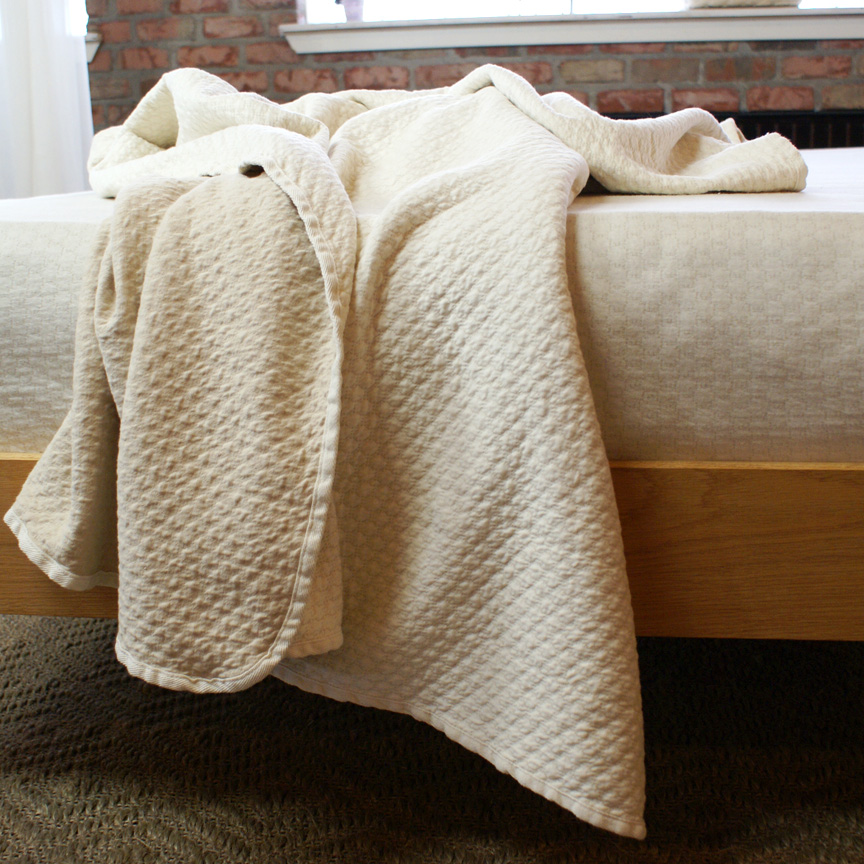
Most consumers are unaware of the abundant textiles available to manufacture “green goods” and the opportunity to market products deceptively, this is known as green-washing. An example of green-washing in the mattress world is in mattress ticking. Mattress ticking is the fabric used on the outside of a mattress. These mattress knits are comprised of three components: the face (top side), the fill (inside), the back (bottom). The majority of falsely advertised organic cotton knits feature organic cotton only on the top side, or the side you see, leaving the inside and bottom of the knit unknown but usually synthetic polyester. These fabrics are advertised misleadingly to the consumer as organic cotton even though only 33% of the fabric is really organic. Many mattresses offered today are marketed with organic cotton or bamboo fabric, these companies neglect to tell you the content breakdown.
The popularity of green products such as organic cotton and latex mattresses comes with a price to consumer research. Even many so-called “latex mattresses” often only contain a small layer surrounded by foam and/or coils. So “natural” latex really only contains a percentage of the natural. In this era of popularity for organic cotton and latex mattresses, it’s imperative for the consumer to do thorough research so they can be 100% sure they are getting the product they think they are purchasing.
History of Latex Mattresses
1931
The world’s first latex mattress was made. The features of not having to be flipped, staying fresh, responsive, supportive and keeping its shape made the mattress a huge success.
Through the decades
The cost of this premium material made it more expensive, thus latex mattresses were soon overshadowed by beds made with synthetic batting and petroleum foams placed over innerspring coils.
1954
Latex is proven to contain exceptionally high anti-bacterial properties by Dr. Theo Lammers from the Institute of Hygiene Gutenburg University, making it the hygienic ideal for mattresses
1956
The Asthma Clinic concluded: advantages of latex mattresses with its natural properties of capable of killing bacteria (such as fungus and mite resistant) have been outlined by health and surgical authorities.
1991
Our mail-order catalog “Tomorrow’s World” was one of the first companies to offer a selection of natural latex mattresses made with organic cotton and wool.
Pick Up The Phone
If you have any questions about the materials we use, any of our products, or about what sleep system is best for you do not hesitate to give us a call. We can get you set up with a personal sleep specialist.
1 (800) 229-7571

